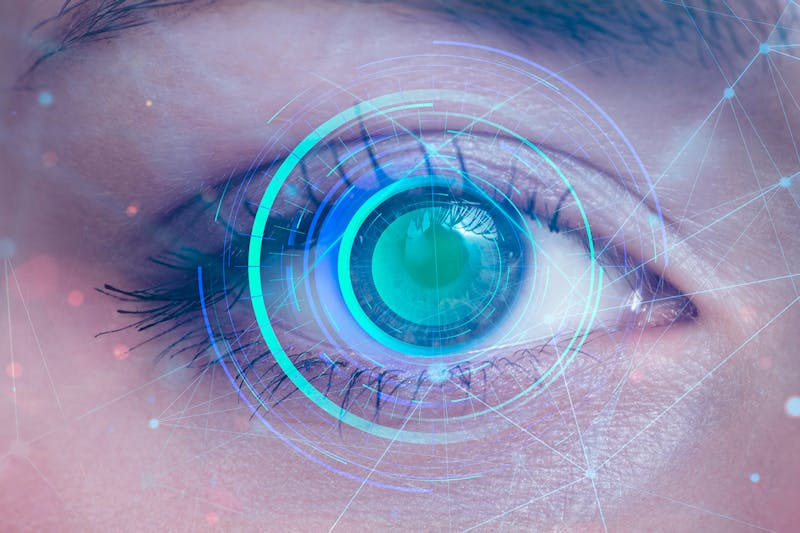
Wouldn’t it be great to get through life without depending on glasses or contact lenses? The development of Laser-Assisted In Situ Keratomileusis (LASIK) made the need for glasses and contact lenses obsolete for many patients.
LASIK eye surgery is among the most common laser procedures used for vision correction. However, not everyone is a candidate for traditional LASIK. The development of thin flap LASIK meant that many more people could benefit from this form of nearsightedness, farsightedness and astigmatism correction. Thin flap LASIK is the most advanced type of laser vision correction surgery.
Thin Flap LASIK
In traditional LASIK, flap thickness is about half of the corneal thickness, ranging between 130 and 220 microns. In thin flap LASIK, the corneal flap lies just below the surface, roughly 100 microns down.
The cornea’s outer layer is called the Bowman’s membrane. That’s why thin flap LASIK is also known as sub-Bowman’s keratomileusis (SBK). The flap lies just beneath Bowman’s membrane. Although the flaps are thin, they are of uniform thickness, or planar.
There’s another term for SBK LASIK: Modern LASIK. The technology is so much better that the description is warranted.
Advantages of thin flap LASIK include:
- Better night vision
- Improved optics for recreational activities, making them safer and more enjoyable
- More corneal tissue left behind, providing better corneal stability
- Lower risk of dry eye compared to traditional LASIK
- Lower risk of corneal haze
- Less chance of infection due to shallower flap
- Less light sensitivity
Overall, the rare chance of serious complications with SBK thin flap LASIK is even lower than with traditional LASIK. The risk of corneal ectasia, a condition in which there is too much corneal thinning resulting in severe vision issues, is extremely low with SBK LASIK.
There is one caveat regarding thin flap LASIK. It is more challenging technically than standard LASIK, which is why it is critical to have an experienced ophthalmologist perform the procedure. It is also more expensive than standard LASIK.
Thin Flap LASIK Procedure
Preparation for SBK LASIK may include not wearing contact lenses for several weeks beforehand. Since contact lenses can affect corneal shape, it is crucial that the cornea has the chance to return to its natural state prior to the procedure. The doctor will advise you on when to stop wearing contact lenses and switch to glasses based on the type of contacts lenses you wear.
The entire thin flap LASIK procedure takes about 20 minutes. Prior to surgery, the eye is numbed. The patient should not feel pain during the procedure.
The doctor uses a femtosecond laser rather than the type used for standard LASIK. This ensures a more precise, and safer, level of accuracy.
The procedure for regular LASIK and SBK LASIK is similar. The laser creates a flap on the cornea. The surgeon then opens the flap and reshapes the corneal tissue. This reshaping results in light reflecting off the eye properly. With thin flap LASIK, as the name implies, the flap created is thinner and smaller in diameter than with standard LASIK. The surgeon completes the procedure by putting the flap back in its original position. No stitches are needed.
Am I a Candidate for Thin Flap LASIK?
Those with thin corneas are not eligible for traditional LASIK. Because SBK thin flap LASIK leaves behind more corneal tissue and stability, it is often suitable for those who cannot receive standard LASIK. Whether you are a candidate depend on factors such as corneal thickness and shape, as well as the degree of refractive error. All potential SBK LASIK patients undergo careful screening.
Candidates for thin flap LASIK must be at least 18 years old.
Thin Flap LASIK Recovery
Most patients can return to work and otherwise resume normal activities within a few days. The recovery process is faster for thin flap LASIK than conventional LASIK. Incisions close on their own within several days.
Expect blurry vision for a few hours post-procedure. You will need someone to drive you home from the eye surgery clinic. However, you will likely have the ability to drive yourself to the follow-up vision assessment and healing visit scheduled for the following day.
Thin Flap LASIK Results
Results are usually immediate. The patient should notice corrected vision right away, although some blurriness is common for a few hours. After that, vision improves rapidly and significantly.
Learn More From Dello Russo Laser Vision
If you would like more information about Thin Flap LASIK and whether you are a candidate for the procedure, contact Dello Russo Laser Vision today. We have locations in Manhattan, New Jersey, Long Island, and Brooklyn.
The Dello Russo doctors and team have been the leading eye care providers for Americans in the Northeast for more than 31 years. We’re proud of our heritage and our long-standing service to the community. The Dello Russo doctors have trained more than 100 surgeons worldwide, and performed more than 190,000 surgeries.
Trust your eyes to the World Class LASIK Surgeons at Dello Russo Laser Vision.
